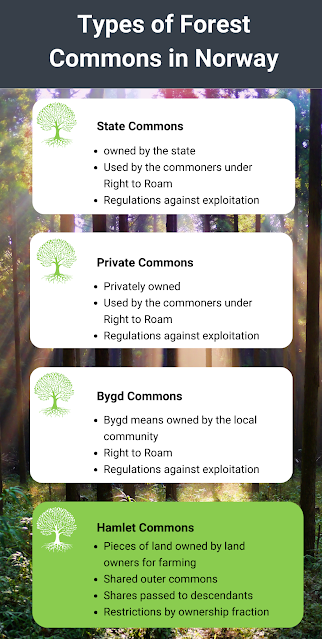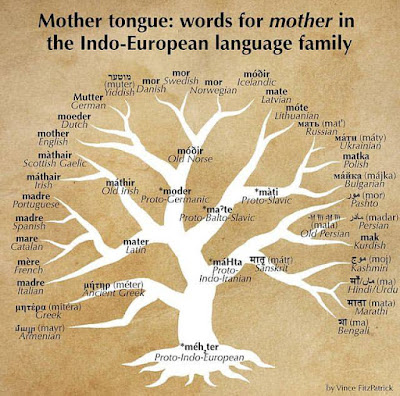An Introduction to the Forest Commons of Northern Europe
In the beginning, we came from the trees. Not the very beginning. This was after Ginnungagap and the formation of the rime. This was after Ymir emerged and Auðumbla licked Buri from the primordial ice. This was after Odin, Vili, and Ve tore Ymir apart to make the 9 worlds. There are many stories from around the world about humans descending from trees. This is the story of Ask and Embla. We are probably most familiar with the Icelandic version in which Ask and Embla (Ash and Elm) were driftwood found on the strand by Odin and his brothers. There is a continental version though, where Ask and Embla were found in a field. Then the gods gave Ask and Embla the qualities that made them into humans.
Trees are central to the Heathen story arc. Humans are often referred to using kennings involving trees in the Lore. We came from trees and to trees we return. Humanity survives Ragnarok because some of us hide in the roots of the World Tree. There it is… the World Tree, Yggdrasil. The center that bridges the 9 worlds, the Tree of Life. Without trees there would be no life. Without trees there would be no us.
But this isn’t the story I want to tell. This is just the story before the story. The story I want to tell is about how we became severed from the natural world, creating an intergenerational trauma and about how the only way to heal this rupture within the Western world is to go back to the trees. We need to reconnect with the land in order to survive.
This is the story of the Forest Commons of Northern Europe and how their destruction changed the course of human history. This is the story of the challenges of modern Heathenry, and trying to reconnect to the land and to land-based identity. This is the story of healing the rupture between land and people, of decolonizing ourselves and returning to our animist roots. We need to build relations with the land, because as long as it remains a commodity to us, then we are preventing it from truly sustaining us. It is time to remember that land is people.
So this is the beginning of that story, it is after Ask and Embla, in the far future of approximately 1050 CE, laws began to be written down, and then between 1274 and 1687 CE the Enclosure Movement (the end of the Forest Commons) occurred gradually as the definition of “King” and thus “King’s Land” changed. In modern times, they are starting to bring back the Forest Commons of Northern Europe in an effort to keep the timber industry in check and to move towards sustainability and better eco-diversity. But let us start building this narrative gradually. This is a big one, and I am going to break it into a series of posts, so that you aren’t trying to read a novel on your computer or device.
I am going to start in this post by going back to basics:
What is a Forest Common?
What are different types of Forest Commons in Northern Europe?
What is the Right to Roam?
Why are they important to eco-diversity and sustainability?
What does the Enclosure Movement have to do with Industrialization?
As English speakers we may have more knowledge of the erasure of the Forest Commons in Anglo-Saxon England.
This erasure occurred across Northern Europe with the creation of the Enclosure Movement.
Today nearly 70% of Northern European forests are privately owned, compared to the only 10% of forests in South Eastern Europe. This is all despite modern efforts in places like Sweden to reintroduce Forest Commons.
Forest Commons are in essence land used communally to meet the subsistence needs of the common people. This means the land is used for feeding the people who live on it and the animals they keep to supply their needs. It also is the source of timber, for building and heating homes, and also the land that provides other resources such as minerals or tar that may be needed for basic tasks around the home or community. What the Forest Commons are not is land that can be exploited and commodified, because this throws off the balance and causes natural resources to deplete until such point as the land becomes uninhabitable.
The Enclosure Movement is the transfer of ownership of land to a select few people for their own personal use and gain. It means that the land is seen as non-living and instead commodified, for example, selling timber to foreign markets. This is not to be confused with the way we as Heathens often view enclosures within Heathenry. This is not about Innangard and Utengard in the sense that we might think of them.
There were “enclosures” before the Enclosure Movement. Each commoner had their home and a very small piece of land maintained around that dwelling, often enclosed in a hedge or barrier of some kind. This land was used to house animals in the winter, to grow a garden in the summer, etc. The commons lay beyond these small enclosures and were shared by the community. Beyond the commons were the wilds. The commons were the known land surrounding the community that were used for hunting, fishing, farming, and gathering. When we think of Innangard and Utengard now what we are actually envisioning as Innangard would include both the home enclosure and the commons, and Utengard was that unknown that lay beyond.
My point is that we view enclosure differently in modern times because of the Enclosure Movement. We generally think of enclosure now as a positive thing as it is what we have control over, but this is colonial thinking that is keeping us at arms-length from the land. You cannot control the land, only build relations with it so that it will continue to sustain you. By expanding our enclosures to be larger than we need for subsistence and protection, we are harming ourselves and other beings. So small enclosures were always necessary, but the large enclosures of the Enclosure Movement were what ruptured our relations with the land.
Equity and the Forest Commons
The use of Forest Commons in modern times is riddled with challenges in equity. For example, the Hamlet Commons of Norway are passed down specifically in the male line. Additionally, there are clashes between various ethnic groups such as the Saami and the Swedish farmers, that have historical roots.
In the next post in this series I will start to walk you through the History of the Forest Commons.
.
References:
Children of Ash and Elm by Neil Price
"Commoning in the periphery – The role of the commons for understanding rural continuities and change” by Emil Sandstrom
“Ecology, Religions, Human Retreat, and Global Imagination” by Richard Holzol
"Fencing off ideas: enclosure & the disappearance of the public domain." by James Boyle
“Forests in common: Learning from diversity of community forest arrangements in Europe” by Anna Lawrence, Paola Gatto, Nevenka Bogataj, and Gun Lidestav
“The Forest Finns as Transmitters of Finnish Culture from Savo via Central Scandinavia to Delaware” by Juha Pentikainen
“From Common to Private Ownership: Forest Tenure Development in Sweden 1500-2010” by Fredrik Ingemarson and Jan-Erik Nylund
Long Branches by Ann Sheffield
“Review: Cows and Forests: Swedish Environmental History” by Orjan Kardell
“Understanding Norwegian Commons” by Erling Berge
Further Reading:
Learn about Modern Commons
"The Golden Goose: What are the Commons? Why do they matter?" https://www.gaiafoundation.org/what-are-the-commons-why-do-they-matter/
Images:
"The Commons" by Pele Forshed
All other images were made by myself using Canva stock images.







